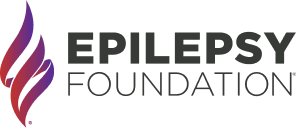Community Forum Archive
The Epilepsy Community Forums are closed, and the information is archived. The content in this section may not be current or apply to all situations. In addition, forum questions and responses include information and content that has been generated by epilepsy community members. This content is not moderated. The information on these pages should not be substituted for medical advice from a healthcare provider. Experiences with epilepsy can vary greatly on an individual basis. Please contact your doctor or medical team if you have any questions about your situation. For more information, learn about epilepsy or visit our resources section.
Over 40 Different Types Of Seizures - Revised
Sun, 03/25/2007 - 03:04It has been said repeatedly that there are over 40 different types of seizures with more or less only the most 'popular' listed. Let's see if we can locate the ones that aren't. These types of seizures affect someone and I feel need to be noted. I'm curious to see how many can be located. Anyone interested in helping me find them, please list what you find here along with their description. Thank you! Take care and have a good day! -Spiz This thread is a revision of the first one in order to make changes and additions.
A Note from epilepsy.com's Editors (August 2017)
This forum post was originally created in 2007. Over the years, many of the links provided in the comments have expired or may not have been updated. To find reliable, expert-verified information, visit the following sections of this site:
In late 2016, the International League Against Epilepsy (ILAE) approved a new way of organizing seizures that reflects recent advances in our understanding of the brain and seizures. This new system will make diagnosis and classification of seizures easier and more accurate. Learn more here.
These terms don’t change what occurs during a seizure, but offer a different way of naming seizures. More accurate ways of naming seizures can lead to more appropriate treatment.
We also want to take this opportunity to remind site visitors...
- If your seizures are not controlled, seek out the help of an epilepsy specialist or visit an epilepsy center to explore treatment options that may include medications, surgery, devices, and dietary therapy. Newer approaches and research trials are also available at many centers.
- Learn about how to stay safe.
- Help others learn seizure first aid.

I did not see ESES? Electro
Submitted by chrislopukhin1 on Thu, 2017-04-27 - 13:42
I did not see ESES? Electro status Epilepticus in Slow Sleep which is what my son has